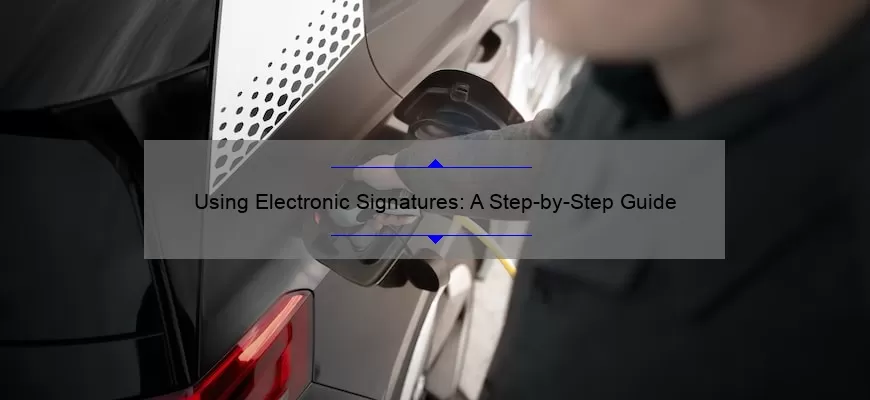What is an Electronic Signature?
An electronic signature (sometimes referred to as an e-signature) is an electronic representation of a person’s agreement to a document or transaction. It’s typically used in place of a traditional handwritten signature, allowing users to sign documents or perform other authentication tasks without the need for physical ink and paper. Electronic signatures provide a secure, verifiable, and legally-binding method for signing documents.
In the digital world, an electronic signature is typically a biometric, cryptographic, or digital signature that is used to authenticate a person’s identity, and to sign documents, agreements, and transactions. The electronic signature is designed to ensure that the signature is authentic, secure, and that the person signing it is the same person who is signing the document.
The use of an electronic signature provides a number
How Do I Use an Electronic Signature?
An electronic signature (also known as an e-signature) is an electronic process used to sign an electronic document or contract. An electronic signature is considered to be legally binding and is used in place of a traditional, handwritten signature. It is an accepted method of authentication and acceptance in countries around the world, including the United States.
Using an electronic signature is simple and straightforward. All you need is an electronic device and an internet connection. After the document or contract is created, the sender will provide a link to the document, which can be accessed on any electronic device. Once the recipient opens the link, he or she will be prompted to enter their name and other information, such as address, phone number, and email address. After filling out the required information, the recipient will click the button to sign the document.
What Are the Benefits of Using an Electronic Signature?
In today’s digital world, electronic signatures are becoming an increasingly popular way to sign documents quickly and securely. An electronic signature is an electronic form of a paper signature that is used to authenticate and legally bind agreements between two or more parties. The primary benefit of using electronic signatures is the convenience it offers. With an electronic signature, you don’t need to print off a document, sign it and scan it back in. Instead, you can simply upload the document and send it for approval with a few clicks of a button.
Another benefit of using electronic signatures is the accuracy and security it provides. Electronic signatures are stored digitally, making them tamper-proof, and the signature itself is difficult to counterfeit. This means that it is more difficult for a third party to interfere with the document or alter the signature without
What Regulations Apply to Electronic Signatures?
In the digital age, digital signatures are becoming an increasingly popular way for parties to legally bind themselves to a document or contract. Electronic signatures, also known as digital signatures, are legally binding in most countries, however, there are many regulations that apply to them in order to ensure their validity.
The first set of regulations that apply to electronic signatures is the standards and protocols used to create and authenticate them. Electronic signatures must be encrypted and stored in a secure manner, and must be compliant with the Digital Signature Standard (DSS) set forth by the National Institute of Standards and Technology (NIST). Additionally, the signature must also be verified and authenticated by a trusted third party.
Another set of regulations that apply to electronic signatures is the laws governing their use. In the United States, the Electronic Signatures in Global and National Commerce Act (ESIGN) and the Uniform Electronic Transactions Act (UETA) govern the use of electronic signatures. These laws state that electronic signatures are legally binding, and that they are to be treated the same as a handwritten signature.






